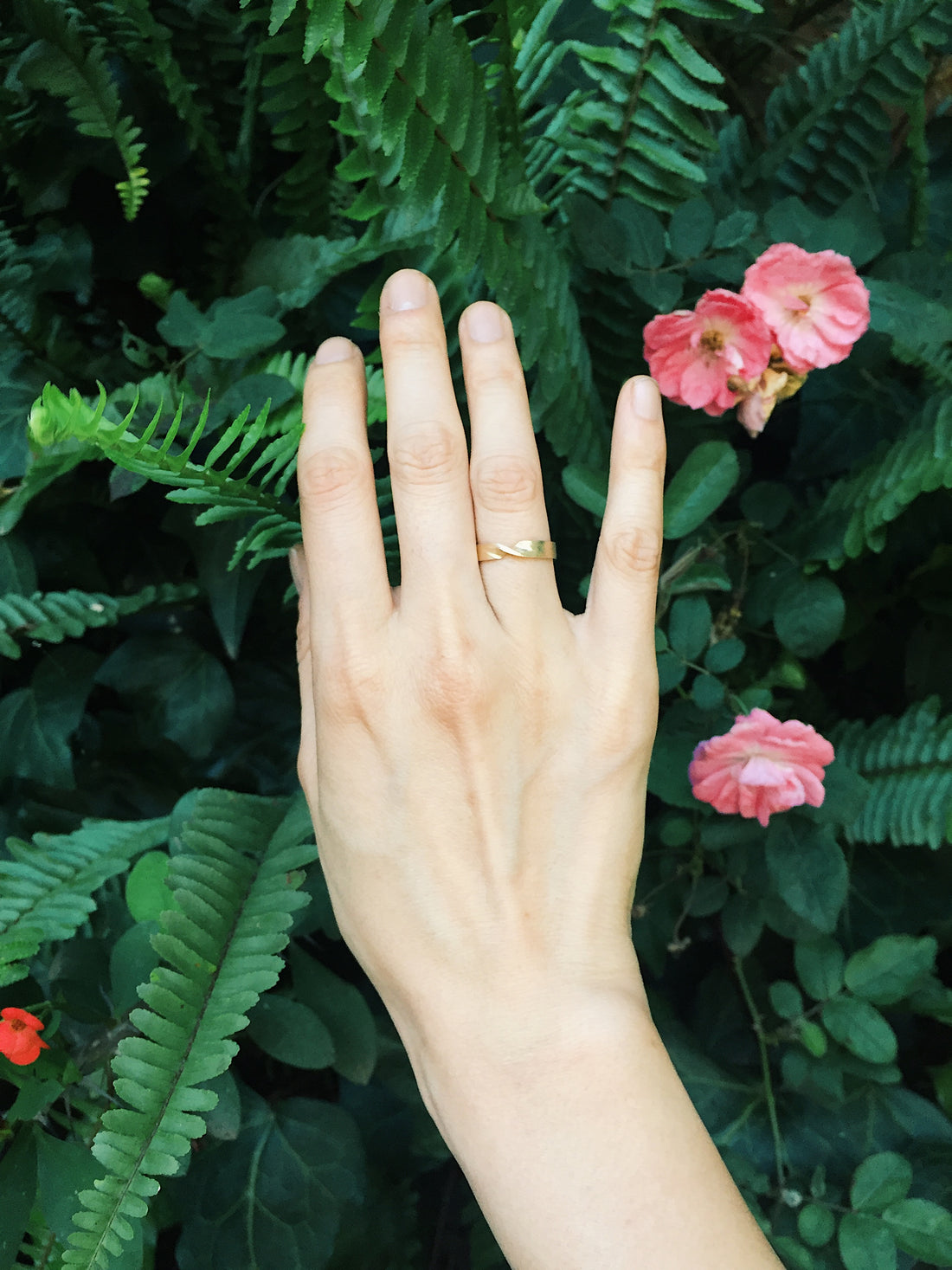
Let's talk about the color of gold.
Share
Let's talk about the color of gold.
A fun part of my job is getting to know my clients, each and every one of you. I use the word 'client' in a very broad manner. In this case, I am referring to people who are interested in jewelry. Jewelry as an art form, an accessory or as a declaration of love.
I want to share some information that will help you find the right type of jewelry without feeling overwhelmed and anxious when you are purchasing jewelry.
Here are some key facts:
- Gold comes in three colors: yellow gold, white gold and rose gold.
- The natural state we find gold in is called 24 karat gold. These are the golden nuggets found in the mines when people are mining for gold. It is considered to be 99.9% pure gold factoring in impurities.
- Goldsmiths and jewelers generally don't work with 24k (short for karat) gold because it is too soft to work and impractical, especially when it comes to setting precious gemstones.
- There are cultures that prefer the yellowness of 24k gold for pieces worn for special occasions, and most of these pieces are cast and only worn once. They are then kept away and passed down to other generations for their significance and monetary value.
- The ways we measure gold and gemstones are different, even though they sound the same. With gold we use KARAT - this is a measurement of the proportion of gold in an alloy in 24 parts. For gemstones we use the term CARAT - a measurement of weight: 1 carat = 0.2grams. Diamonds are also sometimes measured in points, which I will address in another blog post.
- Another great point to note: gold does not tarnish. This is not to say you shouldn't care for your jewelry, but if it does become dull, remember to give it some tender loving care (TLC) such as wiping it with a natural fiber cloth to brighten it up or send it back to the jeweler to get it polished.
Why does gold come in three colors? Let's address that.
- Yellow gold
- What we commonly take to be the color of gold. It is yellow with a reddish tinge in its natural form and is a malleable metal in its pure form (24k). In its pure form, it is composed of the single element Au in the periodic table. In practice we create different types of yellow gold by alloying it (adding different metals to it) with varying amounts of silver and copper.
- Rose gold (also known as red gold or pink gold)
- This is the type of gold that looks slightly rose-colored and looks great on people who have warm undertones. It is created by alloying gold mainly with copper - which is where we get the reddish/pinkish hue from - and with a tiny amount of silver.
- White gold (this is different from platinum which is an entirely different metal and I'll talk about this in future blog posts)
- For the most part when people think of white gold they tend to think it looks really similar to silver but in reality it does not. It has a more darker coloring to it and looks almost metallic gray. White gold is also made by alloying gold with different metals, but it requires more labor, which is why it costs more. To make white gold we alloy gold with palladium and silver OR nickel, copper and zinc. Palladium and nickel act as the bleaching agents giving gold the white-ish hue we want.
- NB: as we sometimes use nickel in alloying our gold to make white gold, people who have allergies to nickel are advised to use platinum (if you're looking for something with a similar coloring) instead. The nickel can cause an allergic reaction in the form of a skin rash or inflammation when your jewelry is worn over a long period of time.
- As the gold is alloyed with varying amounts of different metals the color changes ever so slightly depending on the purity of your gold.
- These are solid forms of gold and there are other options such as gold vermeil, gold-plated and gold-filled. Please note - none of these are solid gold pieces but instead rely on a base metal such as silver or sometimes even copper which are then gilded with a thin layer/layers of gold.
Seen below is a wedding band made with rose gold, it resembles a more rose-colored hue of gold.

Seen below is a ring handcrafted with white gold bezel set with a sapphire, it has a more darker looking, whiteish gold hue compared to the rest.

Seen below, is a ring handcrafted using yellow gold. As you can see each image has its slight differences and this one has the most yellowish hue of gold out of the three.

